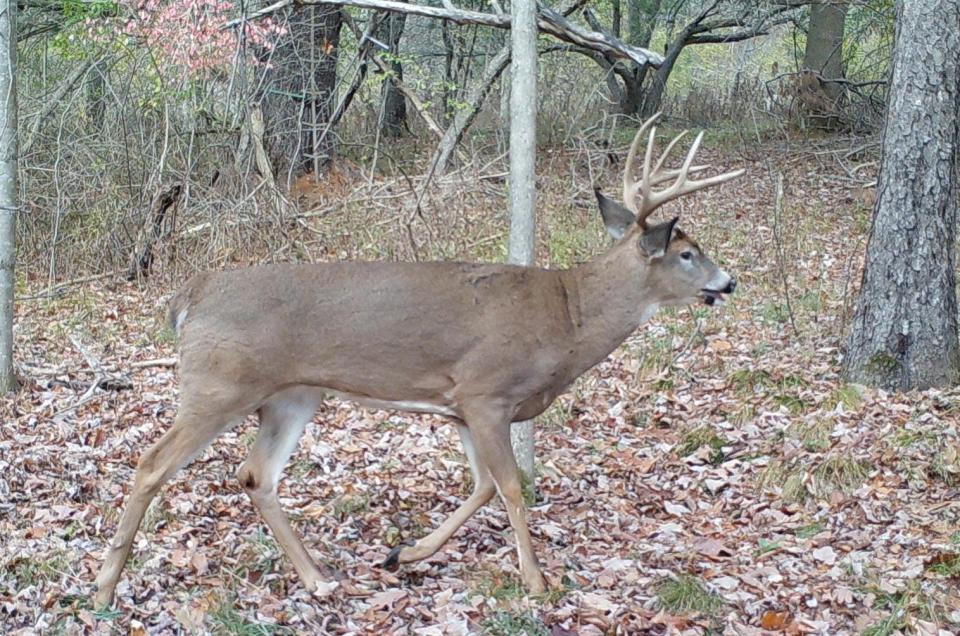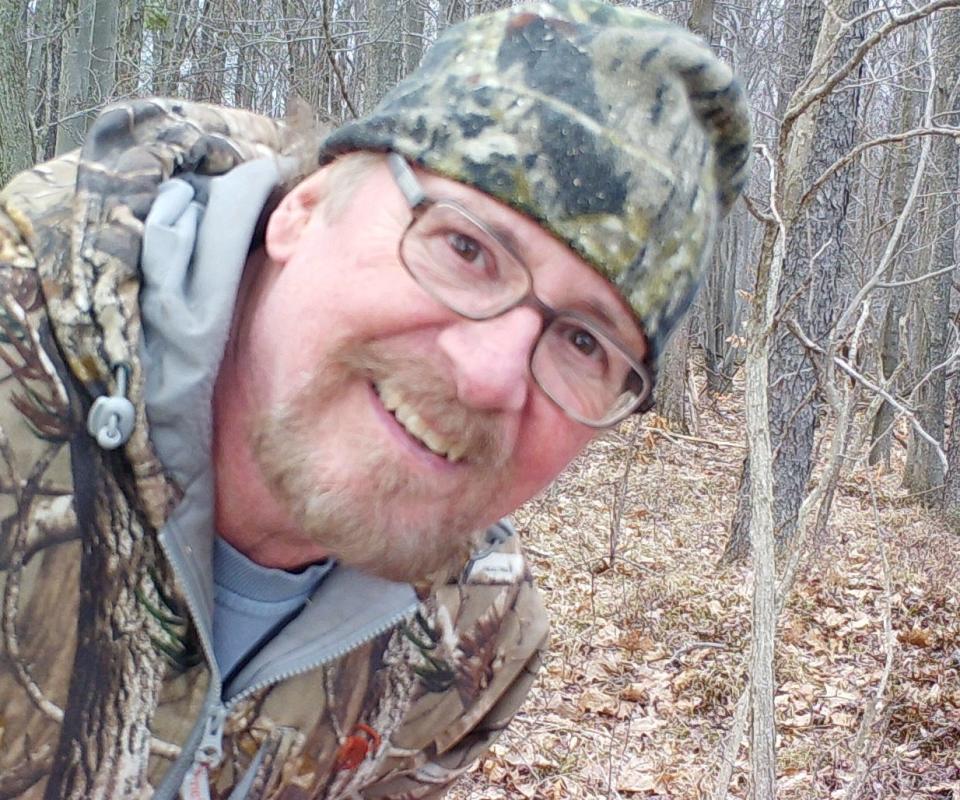Deer hunting tips: Look for telltale movement, plus what to do after pulling the trigger
"Wait a minute," I thought to myself, "That can't be a dish towel in a tree. It wasn’t there before. Nobody would put a towel …"
Only a hint of breeze.
Movement like that, out of place at the end of the season, here in the deer woods.
That distant white flicker had broken through my thoughts and penetrated my tree stand meditation, snapping me to crystal clear reality.
And one more time the handy binos came up, focusing on what had appeared to be a small white cloth, waving through the thick thorn brush, gently flapping in the breeze.
Then, with a twist of the focus ring, the blurry image materialized into deer antlers.
The safety on the rifle clicked off.
Binoculars had cut through the thick brush and revealed a "spread buck" rubbing his antlers on a sapling, a little over 100 yards from my tree stand perch, 20 feet up in a big, leaning ash tree.
His dark body was invisible, perfectly camouflaged in the old, brown goldenrod, beech brush, and Thornapple (Hawthorn) brush.
When deer hunting, whitetails are not always clear to us as an image. We may instead see a bit of movement … legs flashing through the timber, a flick of an ear.
Maybe a light brown patch moved against a darker tree. Sometimes white grabs our attention out of the corner of our eye.
On that day, near the end of the deer season, though it was not even 4 p.m., the light was fading fast. Dark, gloomy, grey afternoons in the New York state deer season bring on darkness fast.
The gun spoke once, the buck whirled.
Instantly gone.
Deer hunters typically do not know what he or she is in for after the shot.
Many times, there's the shot and the deer disappears.
Often, trembling and shaking starts, too.

Some hunters say they don't shake and tremble, even when they see a big-racked buck.
On the one hand, I wonder if they are still alive?
Maybe they are stretching the truth a bit, thinking it’s more manly to say, "Nah, it's nothing to me."
I'm not ashamed to admit that I still feel the wash of adrenaline, the heavy breathing, some weakness in the old knees, after a shot.
Matter of fact, I'm proud of it.
Yes, my knees still tremble a bit … maybe not like they did 50 years ago when they were young and I started deer hunting with a wild passion.
But there is one difference.
When I started whitetail hunting, my heart would pound out of my chest, especially when shooting bucks.
When that adrenalin charge of the hunt fails to excite me, just doesn't make my soul quiver like a beech leaf in a strong wind, I’ll probably wind down deer hunting.
After the shot, this deer hunter has to still silently speak to calm those shaking nerves.
"Now quietly unload the gun, shell-by-shell," the voice says. Slide the action on the receiver. Eject the shells one by one.
"Lower the gun down to the ground with a rope, carefully, through the surrounding brush. Wait. Oh, yeah, first, double-check, make sure the snap on the rope is firm on the gun.
"Slowly, put on the day pack, collecting the miscellaneous gear from the stand.
"Control those trembling and shaking knees.
“Climb down slowly and carefully.
“Keep it under control.
"He'll be right there."
"Keep a cool head. You'll do a better job."

But first, after the shot, a hunter should mentally mark exactly where the buck was standing when the trigger was pulled.
Bushes and saplings look quite different from a tree, an elevated stand, than when viewed from the ground, when standing right next to them.
Pick a unique stump, log, or tree that can be identified no matter the perspective.
And also mentally mark the last place the deer was seen.
If a hunter doesn't, it may mean climbing back up into the stand and then picking out that distinguishing bush, tree or log to be used as a point of reference to find the first sign of the hit, and start trailing.
More: Primitive arms season? There's no such thing anymore with advances to muzzleloaders, bows
But on this end-of-the-season hunt, through the wet, bent over Goldenrod, a glint of white antler stuck up at the top of a grassy knoll in the old field.
Heart leaped once again as the big dark body was still.
Humbled and blessed again.
Venison from the deer woods.
-- Oak Duke writes a weekly column.
This article originally appeared on The Evening Tribune: Deer hunting tips: Look for movement, what to do after pulling trigger

